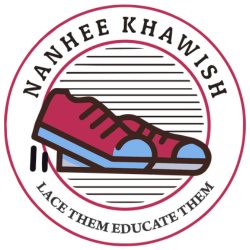Governments, NGOs, and communities have the power to eliminate the barefoot crisis that plagues rural schools. Every day, countless children traverse long and arduous routes to school without proper footwear, leading to significant health issues and adversely affecting their education. While some welfare programs focus on essentials like school uniforms and meals, footwear often remains overlooked, perpetuating a cycle of disadvantage. This blog outlines practical solutions to ensure that every child has access to proper footwear, emphasizing initiatives spearheaded by organizations like the **Nanhee Khawish Foundation**.
Possible Solutions
- Government Initiatives:
The first step toward addressing the barefoot crisis is for governments to include footwear provisions in existing student welfare schemes. By ensuring that proper footwear is distributed in government schools, barriers to education can be reduced. Programs that currently assist with school supplies and meals should be expanded to encompass footwear. The **Nanhee Khawish Foundation** advocates for such measures, highlighting how governmental support can create a more equitable educational environment for rural children.
- Shoe Donation Drives:
NGOs can play a pivotal role by organizing shoe donation drives in collaboration with brands and individuals. By leveraging community resources, these initiatives can provide durable shoes to children in need. The **Nanhee Khawish Foundation** has successfully run campaigns that mobilize local communities to collect shoes and distribute them directly to schools, ensuring that children receive footwear tailored to their specific needs.
- Corporate Social Responsibility (CSR) Programs:
Companies can integrate footwear donations into their Corporate Social Responsibility (CSR) initiatives, creating a long-term impact on the communities in which they operate. By partnering with organizations like the **Nanhee Khawish Foundation**, businesses can help foster sustainable solutions to the barefoot crisis. Such collaborations can not only provide shoes but also promote corporate engagement in social issues that affect their local communities.
- Community Participation:
Local leaders, social workers, and community members can encourage grassroots involvement in shoe donation programs. By promoting the significance of proper footwear for children’s health and education, communities can rally together to support initiatives aimed at alleviating the barefoot crisis. The **Nanhee Khawish Foundation** emphasizes the importance of education and awareness, advocating for community-led efforts to engage families in understanding the need for adequate footwear. Such grassroots movements can create a cultural shift that values and prioritizes children’s well-being.
Conclusion
By working together—governments, NGOs, corporations, and communities—we can ensure that no child is forced to walk barefoot to school. Providing proper footwear is not merely an act of charity; it is an investment in a child’s education, health, and future success. Every step taken to combat the barefoot crisis is a step toward creating a more equitable society where children can thrive. Initiatives spearheaded by organizations like the **Nanhee Khawish Foundation** provide a beacon of hope, demonstrating that with collective action, we can pave the way for a brighter future for all children. Together, we can build a world where every child has the opportunity to learn, grow, and walk confidently toward their dreams.






Leave a Reply